A Beginner’s Guide to Kettlebells - "Essential Exercises for Maximum Results"
One of the key benefits of incorporating kettlebells into workout routines is their ability to improve overall strength. Unlike traditional weights that focus on isolated muscle groups, kettlebell exercises engage multiple muscles simultaneously, promoting whole-body strength. Additionally, the dynamic nature of kettlebell movements enhances flexibility and joint stability, reducing the risk of injuries. The cardiovascular benefits of kettlebell training are noteworthy as well; high-intensity kettlebell workouts can significantly elevate heart rate, improving cardiovascular endurance.
FITNESS
Peter
7/2/202416 min read
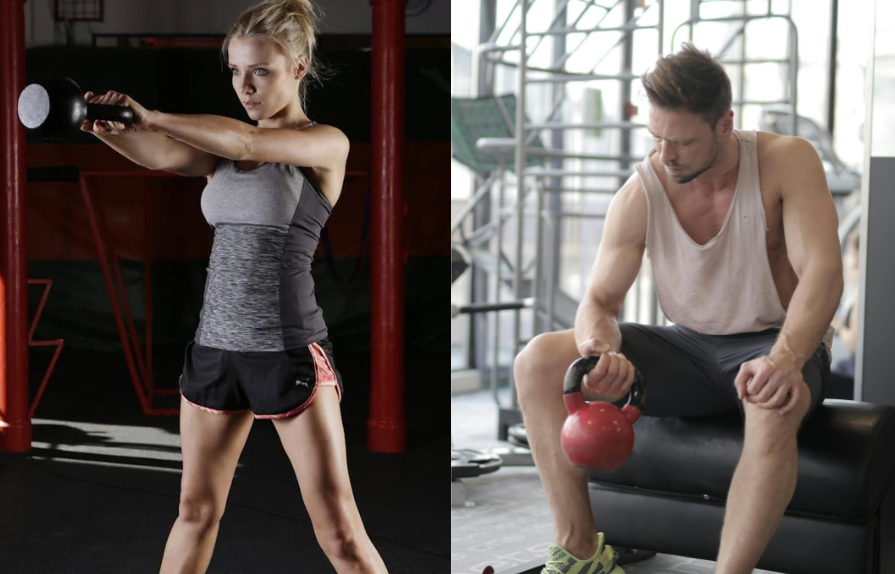

Introduction to Kettlebells: My Personal Journey
When I first discovered kettlebells, I had no idea how much they would transform my fitness journey. These unique weights, with their distinctive handle attached to a cast-iron ball, have a fascinating history that I've come to appreciate. Originating in Russia in the 18th century, kettlebells were initially used as counterweights for measuring crops. It amazes me to think about how they evolved from simple agricultural tools to become a cornerstone of physical training, embraced by the Russian military and athletes alike.
As I delved deeper into kettlebell training, I realized that their design sets them apart from other weights like dumbbells and barbells. This unique structure allows for a wider range of motion and more dynamic exercises, which I've found incredibly beneficial for enhancing my functional fitness. The versatility of kettlebells never ceases to impress me, making them suitable for various fitness levels and goals, from beginners like I once was to the advanced athletes I aspire to be.
My Kettlebell Journey: Discovering the Benefits
When I first incorporated kettlebells into my workout routine, I was astounded by their ability to improve my overall strength. Unlike the traditional weights I was accustomed to, which often focused on isolated muscle groups, I found that kettlebell exercises engaged multiple muscles simultaneously. This comprehensive approach to strength training was a game-changer for me, promoting whole-body strength in ways I hadn't experienced before.
One of the most surprising benefits I encountered was the enhancement in my flexibility and joint stability. The dynamic nature of kettlebell movements forced me to move in ways that challenged my range of motion. Over time, I noticed a significant improvement in my flexibility, and the increased joint stability has been crucial in reducing my risk of injuries during other physical activities.
The cardiovascular benefits of kettlebell training caught me off guard. I remember my first high-intensity kettlebell workout – I was breathless and my heart was pounding, much like after an intense cardio session. This dual benefit of strength and cardiovascular training in one workout was a revelation, significantly improving my overall endurance.
As I continued my kettlebell journey, I began to appreciate their versatility even more. Whether I was looking to improve my general fitness or push myself to enhance specific athletic performance, kettlebells always seemed to fit the bill. Their growing popularity in various fitness communities, including CrossFit and functional training classes, only reinforced my belief in their effectiveness.
The Comprehensive Benefits I've Experienced
Full-Body Workouts: One of the aspects I love most about kettlebell training is how it engages multiple muscle groups simultaneously. This efficiency has allowed me to get comprehensive full-body workouts in less time than my previous routines.
Functional Strength: I've noticed a significant improvement in my day-to-day activities. The kettlebell movements often mimic real-life motions, which has enhanced my functional strength in ways I never expected. Simple tasks like lifting groceries or moving furniture have become noticeably easier.
Cardiovascular Conditioning: The high-rep kettlebell exercises I incorporate into my routine provide an excellent cardiovascular workout. I've found that I can combine strength training with aerobic benefits in a single session, which has been incredibly time-efficient.
Core Strength: The off-center weight of kettlebells requires constant core engagement. Over time, I've developed improved core strength and stability, which has positively impacted my posture and overall body awareness.
Flexibility and Mobility: Many of the kettlebell exercises I perform involve a wide range of motion. This has gradually improved my flexibility and joint mobility, making me feel more agile and less prone to stiffness.
Time-Efficient Workouts: One of the biggest advantages I've found is the ability to get both strength and cardio benefits in shorter sessions compared to my old gym routines. This efficiency has made it easier for me to maintain consistency in my workouts, even with a busy schedule.
Versatility: From basic movements to complex flows, I've been able to adapt my kettlebell workouts as my fitness level has improved. This versatility has kept my workouts challenging and engaging over time.
Space-Efficiency: Living in a small apartment, I appreciate that a single kettlebell can provide me with a full-body workout. This space-efficiency has made it possible for me to maintain a consistent workout routine at home.
Improved Grip Strength: The thick handles of kettlebells have significantly challenged and improved my grip strength. This unexpected benefit has carried over to other areas of my life, from rock climbing to opening stubborn jars.
Balance and Coordination: The unique shape and weight distribution of kettlebells have enhanced my proprioception and body awareness. I've noticed improvements in my balance and coordination, which have been beneficial in other physical activities I enjoy.
My Guide to Choosing the Right Kettlebell
As I've progressed in my kettlebell journey, I've learned that selecting the appropriate kettlebell is crucial for maximizing workout results and ensuring safety. Through trial and error, I've familiarized myself with the three primary types of kettlebells: cast iron, competition, and adjustable.
Cast iron kettlebells have become my go-to for general fitness routines. I appreciate their versatility and the range of weights available, which has allowed me to progress from beginner to more advanced levels. The color-coding system has been particularly helpful in quickly identifying weights during my workouts.
While I primarily use cast iron kettlebells, I've had the opportunity to try competition kettlebells during specialized training sessions. Their uniform size, regardless of weight, provides a consistent feel, which I found beneficial for perfecting my technique. Although they're more expensive, I can see their value for serious athletes participating in kettlebell sport.
For my home gym, I invested in an adjustable kettlebell. This decision was driven by space and budget constraints, and I've found it to be an excellent solution. The ability to modify the weight by adding or removing plates has given me a broad range of resistance levels in a single piece of equipment, allowing me to progress without needing to buy multiple kettlebells.
When I first started, choosing the right weight was challenging. Through experience and guidance from certified instructors, I learned to start with lighter weights to master basic movements and form. As a woman, I began with an 8kg kettlebell, which allowed me to focus on technique without being overwhelmed by the weight. As my proficiency increased, I gradually progressed to heavier weights, continually challenging my muscles and improving my strength.
One aspect I initially overlooked but now consider crucial is the proper grip and handle size. I've learned to ensure that the handle is smooth and fits comfortably in my hand, allowing for a secure grip without causing discomfort. In the beginning, I made the mistake of using a kettlebell with a handle that was too thick, which led to improper form and potential injury risks. Now, I always test the grip before committing to a new kettlebell.
For those new to kettlebell training, I can't stress enough the importance of seeking guidance from a certified instructor. This approach helped me immensely in learning correct techniques and safely progressing to higher weights. By carefully selecting the right kettlebell and weight, I've been able to optimize my workouts and achieve my fitness goals more efficiently than I ever thought possible.
In conclusion, my journey with kettlebells has been transformative. From improving my overall strength and cardiovascular health to enhancing my flexibility and functional fitness, kettlebells have become an indispensable part of my fitness routine. As I continue to explore and challenge myself with kettlebell training, I'm excited to see how much further I can progress and what new benefits I'll discover along the way.
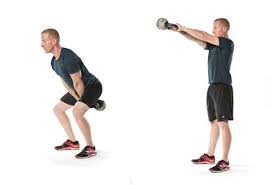

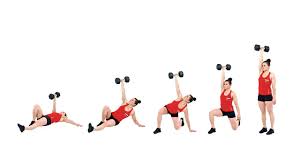

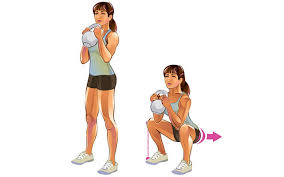

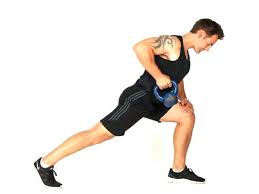

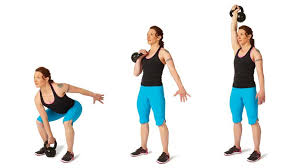

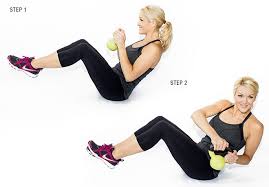

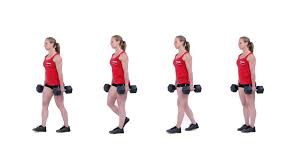

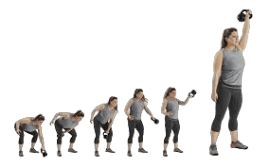

Welcome to Scandi Home Heaven! We believe in transparency and want to disclose that some of the links on our site are affiliate links. This means that at no additional cost to you, we may earn a commission if you click through and make a purchase. We only recommend products and services we have personally used and believe will add value to our readers.
Your support helps us continue to provide high-quality content. Thank you!
Essential Warm-Up Exercises
Before embarking on any kettlebell workout, it is crucial to prioritize a thorough warm-up routine. Warming up serves to prepare the muscles, joints, and cardiovascular system for the physical demands of the exercises to come, significantly reducing the risk of injury and enhancing overall performance. A well-structured warm-up increases blood flow to working muscles, elevates body temperature, and improves flexibility and mobility, which are essential for the dynamic movements involved in kettlebell training.
To begin, dynamic warm-up exercises are highly effective in priming the body. Start with arm circles to loosen up the shoulders. Extend your arms to the sides and slowly rotate them in small circles, gradually increasing the size of the circles. This movement helps to enhance shoulder mobility and prepare the upper body for the overhead and swinging motions of kettlebell exercises.
Next, incorporate hip rotations to activate the hip joints and surrounding muscles. Stand with feet shoulder-width apart, place your hands on your hips, and make slow, controlled circles with your hips. This exercise is pivotal in promoting hip mobility, which is vital for movements like kettlebell swings and squats.
Bodyweight squats are another essential component of the warm-up routine. Perform a series of squats, ensuring your knees track over your toes and your back remains straight. This exercise activates the lower body muscles, particularly the quadriceps, hamstrings, and glutes, and mimics the movement patterns used in many kettlebell exercises.
Incorporate light cardio activities to elevate your heart rate and increase blood circulation. Exercises like jumping jacks or jogging in place for a few minutes are excellent choices. These activities not only prepare the cardiovascular system but also promote overall body readiness.
Finally, focusing on mobility and flexibility is key. Incorporate dynamic stretches such as leg swings and torso twists to enhance the range of motion in your limbs and spine. This comprehensive approach ensures that all major muscle groups and joints are adequately prepared for the rigorous demands of kettlebell training.
By dedicating time to a structured warm-up, you lay a solid foundation for a safe and effective kettlebell workout, optimizing performance and minimizing the risk of injury.
Top Kettlebell Exercises for Beginners
Starting your fitness journey with kettlebells can be incredibly rewarding, given their versatility and effectiveness. Here, we provide an in-depth guide on the most essential kettlebell exercises for beginners, ensuring you understand the proper form and common mistakes to avoid.
Kettlebell Swing
The kettlebell swing is often considered the cornerstone of kettlebell training. It's a powerful, full-body exercise that primarily targets the posterior chain (glutes, hamstrings, and lower back).
How to perform: a) Stand with feet shoulder-width apart, kettlebell on the floor slightly in front of you. b) Hinge at the hips, bending forward to grasp the kettlebell with both hands. c) Pull the kettlebell back between your legs, keeping your back straight and core engaged. d) Explosively drive your hips forward, swinging the kettlebell up to chest height. e) Let the kettlebell fall naturally, controlling its descent back between your legs. f) Repeat for the desired number of repetitions.
Key points:
Keep your arms straight throughout the movement
Power comes from the hips, not the arms
Maintain a neutral spine
Breathe out as you swing up, in as you swing down
Turkish Get-Up
The Turkish Get-Up is a complex, full-body exercise that improves strength, stability, and mobility. It involves moving from a lying position to a standing position while holding a kettlebell overhead.
How to perform: a) Lie on your back with the kettlebell in your right hand, arm extended straight up. b) Bend your right knee, placing your right foot flat on the ground. c) Roll onto your left elbow, then push up to your left hand. d) Lift your hips off the ground, forming a straight line from your left hand to your feet. e) Sweep your left leg back, coming into a half-kneeling position. f) Stand up, keeping the kettlebell overhead throughout the movement. g) Reverse the steps to return to the starting position. h) Repeat on the other side.
Key points:
Keep your eyes on the kettlebell throughout the movement
Move slowly and with control
Maintain a strong, stable arm holding the kettlebell
Goblet Squat
The goblet squat is an excellent exercise for developing lower body strength and improving squat form.
How to perform: a) Hold the kettlebell close to your chest, cupping the handle with both hands. b) Stand with feet slightly wider than shoulder-width apart, toes pointed slightly outward. c) Keeping your chest up and core engaged, lower your body as if sitting back into a chair. d) Descend until your thighs are parallel to the ground, or as low as you can maintain good form. e) Push through your heels to stand back up.
Key points:
Keep your weight in your heels
Maintain a neutral spine
Keep your knees in line with your toes
Single-Arm Row
The single-arm row is a great exercise for developing back strength and improving posture.
How to perform: a) Place a kettlebell on the floor next to your right foot. b) Hinge at the hips, bending forward with a flat back. c) Place your left hand on a bench or your left knee for support. d) Grab the kettlebell with your right hand and pull it up towards your ribs. e) Lower the kettlebell back down with control. f) Repeat for the desired number of repetitions, then switch sides.
Key points:
Keep your back flat throughout the movement
Pull your elbow close to your body
Squeeze your shoulder blade at the top of the movement
Clean and Press
The clean and press is a compound movement that develops power, strength, and coordination.
How to perform: a) Stand with feet shoulder-width apart, kettlebell on the floor between your feet. b) Hinge at the hips and grasp the kettlebell with one hand. c) Explosively stand up, pulling the kettlebell up along your body. d) As the kettlebell reaches chest height, quickly dip under it and catch it in the rack position (elbow close to the body, kettlebell resting on the forearm). e) From this position, press the kettlebell overhead. f) Lower the kettlebell back to the rack position, then to the starting position. g) Repeat for the desired number of repetitions, then switch sides.
Key points:
Keep the kettlebell close to your body during the clean
Use your legs to drive the press, not just your arms
Maintain core engagement throughout the movement
Russian Twist
The Russian twist is an effective core exercise that targets the obliques and improves rotational strength.
How to perform: a) Sit on the floor with your knees bent and feet flat on the ground. b) Hold the kettlebell with both hands close to your chest. c) Lean back slightly, lifting your feet off the ground (keep knees bent). d) Rotate your torso to the right, bringing the kettlebell to the right side of your body. e) Rotate to the left, bringing the kettlebell to the left side. f) Continue alternating sides for the desired number of repetitions.
Key points:
Keep your back straight
Rotate from your core, not your arms
For an added challenge, extend your legs
Farmer's Carry
The farmer's carry is a simple yet effective exercise for building grip strength, core stability, and overall conditioning.
How to perform: a) Stand with a kettlebell in each hand, arms at your sides. b) Engage your core and stand tall with shoulders back. c) Walk forward with controlled steps for a set distance or time.
Key points:
Maintain good posture throughout the carry
Take steady, controlled steps
Breathe normally
Kettlebell Snatch
The kettlebell snatch is an advanced exercise that develops explosive power and full-body coordination.
How to perform: a) Stand with feet shoulder-width apart, kettlebell on the floor between your feet. b) Hinge at the hips and grasp the kettlebell with one hand. c) Swing the kettlebell back between your legs. d) Explosively drive your hips forward, pulling the kettlebell up along your body. e) As the kettlebell reaches chest height, punch your hand through the handle, allowing the kettlebell to rotate around your wrist. f) Catch the kettlebell overhead with a straight arm. g) Lower the kettlebell back down to the starting position in a controlled manner. h) Repeat for the desired number of repetitions, then switch sides.
Key points:
Keep the kettlebell close to your body during the pull
Use your hips to generate power, not your arms
Practice the movement with lighter weights before progressing to heavier ones
Safety Considerations
While kettlebell training can be highly beneficial, it's important to prioritize safety:
Start with lighter weights and focus on proper form before progressing to heavier kettlebells.
Warm up thoroughly before kettlebell workouts.
If you're new to kettlebell training, consider working with a certified instructor to learn proper technique.
Listen to your body and avoid overtraining.
Ensure you have enough space to perform exercises safely.
Wear appropriate footwear with good traction.
If you have any pre-existing health conditions or injuries, consult with a healthcare professional before starting a kettlebell training program.
These foundational kettlebell exercises target various muscle groups, enhancing strength, stability, and coordination. By mastering these movements, beginners can build a solid foundation for more advanced kettlebell training.
Advanced Kettlebell Exercises for Experienced Users
For those who have mastered the basics and are ready to take their kettlebell training to the next level, advanced kettlebell exercises offer a pathway to increased power, stability, and coordination. These exercises are designed to challenge your strength and endurance, making them ideal for incorporating into a high-intensity workout routine.
The kettlebell clean and press is a fundamental exercise that works multiple muscle groups. To perform this exercise, start with the kettlebell on the ground between your feet. Squat down and grasp the handle with an overhand grip. In one motion, lift the kettlebell to shoulder height (the 'clean' phase), then press it overhead (the 'press' phase). Ensure your core is engaged throughout to maintain stability.
Another challenging move is the kettlebell snatch. Begin with the kettlebell on the floor. Swing it back between your legs, then drive through your hips to bring the kettlebell overhead in one fluid motion. This exercise not only enhances power but also improves your coordination and balance. Remember to keep your wrist straight and your shoulder packed to avoid injuries.
The kettlebell windmill is excellent for developing core strength and shoulder stability. Start by holding the kettlebell overhead with one arm. Keeping your eyes on the kettlebell, hinge at the hips and lower your torso towards the floor, reaching your free hand down along your leg. This exercise requires flexibility as well as strength, making it essential for advanced kettlebell training.
Lastly, the kettlebell front squat is perfect for building leg strength and improving core stability. Hold the kettlebell at chest height with both hands. Squat down, keeping your chest up and your back straight. This exercise is particularly effective when integrated into a high-intensity workout, as it engages multiple muscle groups simultaneously.
Incorporating these advanced kettlebell exercises into your routine can significantly enhance your overall fitness. By focusing on proper form and technique, you can safely reap the benefits of increased power, stability, and coordination.
Creating an Effective Kettlebell Workout Routine
Designing an effective kettlebell workout routine requires a strategic approach that balances various elements to meet specific fitness goals. Whether your objective is strength building, fat loss, or endurance training, structuring your workouts correctly is essential for achieving maximum results. There are several types of workout structures to consider: full-body workouts, split routines, and circuit training.
Full-body workouts involve exercises that engage multiple muscle groups in a single session, offering a comprehensive approach suitable for overall fitness and fat loss. These routines typically include compound movements like kettlebell swings, goblet squats, and Turkish get-ups. A sample full-body workout could include three sets of 12-15 repetitions for each exercise, performed three times a week.
Split routines, on the other hand, focus on different muscle groups on different days. For example, one might target the upper body on Monday and Thursday, and the lower body on Tuesday and Friday. This structure allows for higher volume and intensity per muscle group, ideal for strength building. A sample split routine might include exercises like kettlebell presses and rows for upper body days, and deadlifts and lunges for lower body days, with each exercise performed for four sets of 8-12 repetitions.
Circuit training combines both strength and cardio by performing a series of exercises back-to-back with minimal rest. This method is effective for endurance and fat loss. A sample circuit might include five exercises such as kettlebell swings, push-ups, lunges, rows, and Russian twists, performed for one minute each, followed by a one-minute rest. Repeat the circuit three times, 2-3 times per week.
The frequency of workouts should align with your fitness level and goals. Beginners might start with two to three sessions per week, while more advanced individuals could aim for four to five sessions. Each workout should include 2-4 sets per exercise, with repetitions ranging from 8-15, depending on the specific goal.
Rest and recovery are crucial components of any workout routine. Ensure you have at least one rest day between intense sessions to allow muscles to recover and grow. Tracking progress is equally important; keep a workout journal to note down sets, reps, and weights used. This will help in adjusting the routine as needed and ensuring continuous improvement.
Disclaimer:
Before beginning any exercise program, including the use of kettlebells, please consult with your physician or healthcare provider. This is particularly important if you have any pre-existing medical conditions, injuries, or concerns about your fitness level.
The following information is for educational purposes only and is not intended as a substitute for professional medical advice, diagnosis, or treatment. Always seek the advice of your physician or other qualified health provider with any questions you may have regarding a medical condition or before starting any new exercise regimen.
Improper use of exercise equipment can lead to serious injury. It is strongly recommended that you work with a certified fitness professional to learn proper form and technique before exercising independently.
Everyone's body is different, and exercises that are suitable for one person may not be appropriate for another. Listen to your body and stop immediately if you experience pain, discomfort, or dizziness during exercise.
By engaging in dumbbell exercises, you acknowledge that you do so at your own risk. The author and publisher of this information disclaim any liability for any injury or damage that may result from the use or misuse of this information.
Remember to start slowly, use appropriate weights, and progress gradually. Safety should always be your top priority when exercising.
Exercise 1
Exercise 2
Exercise 4
Exercise 3
Exercise 5
Exercise 6
Exercise 7
Exercise 8
Welcome to my Designs
Welcome to a world of creative expression! Based in the heart of Copenhagen but reaching customers worldwide, I bring over 500 unique designs to life on t-shirts, hoodies, mugs, and more. Passionate about graphic design, I combine Nordic inspiration with global appeal to offer stylish, high-quality merchandise through Shopify/Printify and Teepublic. Whether you’re looking for a cozy sweatshirt or a personalized candle, each product is crafted to make everyday moments extraordinary.
Explore, express, and enjoy!
Welcome to my world of creative expression! Based in the heart of Copenhagen but reaching customers worldwide, I bring over 500 unique designs to life on t-shirts, hoodies, mugs, and more. Passionate about graphic design, I combine Nordic inspiration with global appeal to offer stylish, high-quality merchandise through Shopify/Printify and Teepublic. Whether you’re looking for a cozy sweatshirt or a personalized Coffee Mug, each product is crafted to make everyday moments extraordinary.
Explore, express, and enjoy!
Advertisment for our Merchndise Shop














